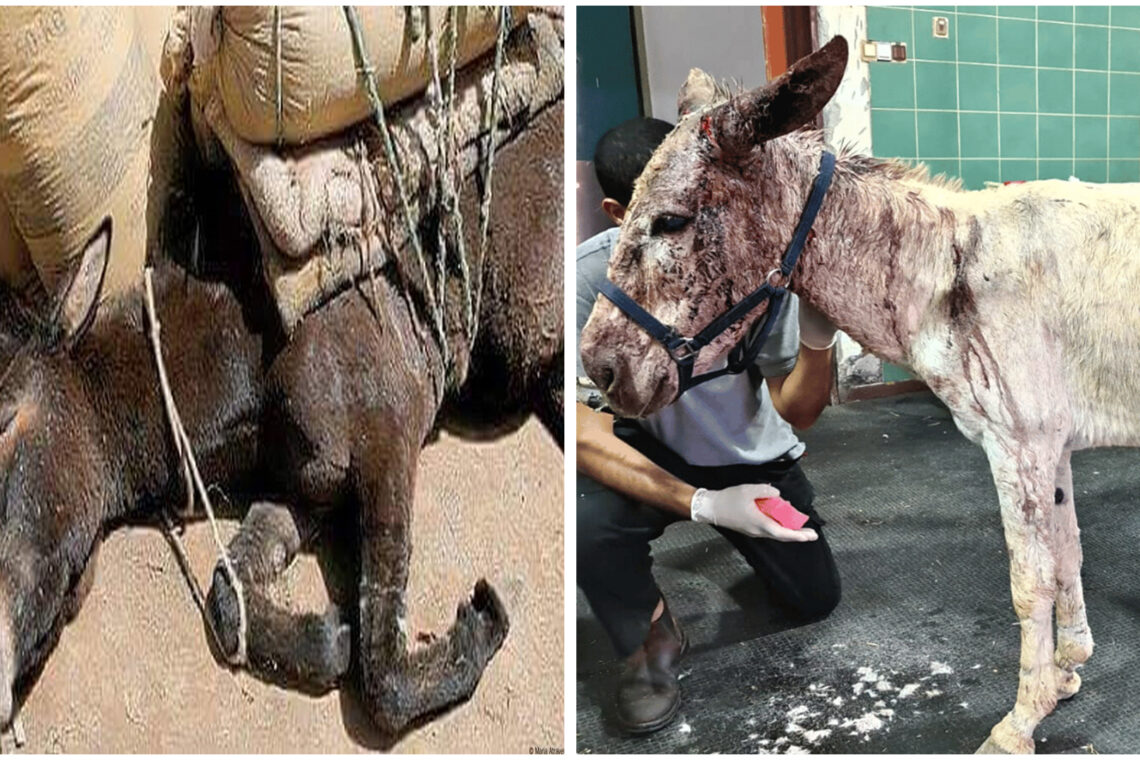
Nestled on the stunning Greek island of Santorini, the capital city of Fira boasts breathtaking views that attract countless visitors each year. However, reaching these panoramic vistas requires a significant physical effort, with over 500 steps leading up to the summit. Many tourists, seeking a more leisurely ascent, opt for an alternative mode of transport: donkey rides. These loyal animals traverse the steep paths daily, carrying passengers up and down the hill, creating a semblance of convenience for those unwilling to tackle the strenuous climb.
While the donkey rides have become a staple of the Fira experience, concerns about the well-being of these animals have emerged. Behind the scenes, activists and animal welfare organizations are raising alarms about the toll this practice takes on the donkeys. Recent images depicting the suffering of these animals have sparked outrage and led to increased scrutiny of the tourism industry in Santorini.
The journey for the donkeys begins in sweltering heat, where they are compelled to transport tourists one after another, day in and day out. The paths they navigate are often treacherous, with steep inclines and uneven steps, providing little relief for the animals. As the number of tourists increases, so does the average weight of those opting for donkey rides. Animal rights advocates argue that many visitors are heavier than in the past, exacerbating the burden on these hardworking creatures. This situation presents a troubling reality for the donkeys, who face an unyielding work schedule without sufficient rest.

Reports indicate that these animals are frequently deprived of basic care, including access to water and appropriate treatment during their grueling shifts. A British newspaper has shed light on the practices of certain owners, revealing that some breed donkeys with horses to create mules that can endure more strain. This approach raises ethical questions about the treatment of these animals and the lengths to which some will go to maximize profit.
The plight of the donkeys is further illustrated through harrowing images released by animal welfare organizations. These photos expose the often unseen injuries sustained by the animals, showcasing bloody wounds and signs of exhaustion. Disturbingly, many donkeys are provided with ill-fitting saddles, which only worsens the injuries they endure throughout their working hours. By the end of the day, some donkeys struggle to rise to their feet, a stark testament to their exhaustion and the toll of their labor.
An advocate from a leading animal welfare organization has stated that animals should ideally carry no more than 20% of their own body weight. However, with the combination of heavier tourists, a lack of shade, inadequate hydration, and the extreme heat, the situation for the donkeys has become dire. Even if tourists were to adhere to this guideline, the working conditions in place are still harsh, making their jobs perilous and painful.

While the responsibility for the suffering of these animals does not rest solely on the owners of these attractions, the demand for such experiences plays a significant role in perpetuating the problem. The reality is that without tourists choosing to ride these donkeys, the industry would struggle to survive. Therefore, individuals who are aware of the ethical implications surrounding these rides can take action by choosing to forgo this experience and advocating for the welfare of the animals involved.
By raising awareness and encouraging others to think critically about the impact of their choices, tourists can contribute to a shift away from these exploitative practices. Many activists are dedicated to shining a light on the darker aspects of the tourism industry, making it increasingly challenging for owners to conceal the detrimental effects of their operations. As more people become informed about the plight of the donkeys in Santorini, the hope is that public sentiment will lead to positive change.
The push for compassion and better treatment of these animals is gaining momentum. With increasing visibility around animal welfare issues, it is vital for travelers to reconsider their participation in activities that may contribute to animal suffering. A future where such practices are no longer tolerated is on the horizon, one where animals are treated with the respect and dignity they deserve.
Ultimately, the situation in Santorini serves as a reminder of the broader ethical considerations that come into play when engaging in tourism. The experiences that many seek can come at a high cost to the creatures that make them possible. As society continues to evolve in its understanding of animal rights, it is crucial for individuals to reflect on their choices and advocate for a more humane approach to tourism.
By supporting alternatives that prioritize the welfare of animals and embracing a mindset of empathy, visitors can help ensure that future generations will not look back on the practices of today with regret. Through collective action and informed decision-making, it is possible to create a world where the suffering of animals is no longer an acceptable aspect of the travel experience.
As awareness grows, it is essential for all those who visit places like Santorini to consider the implications of their actions. The lives of the donkeys, who carry the weight of human desires, deserve to be honored and protected. By choosing not to partake in exploitative attractions, tourists can take a stand against animal cruelty and help pave the way for a more compassionate future. The journey toward change begins with individual choices, leading to a ripple effect that can transform the landscape of tourism for the better.